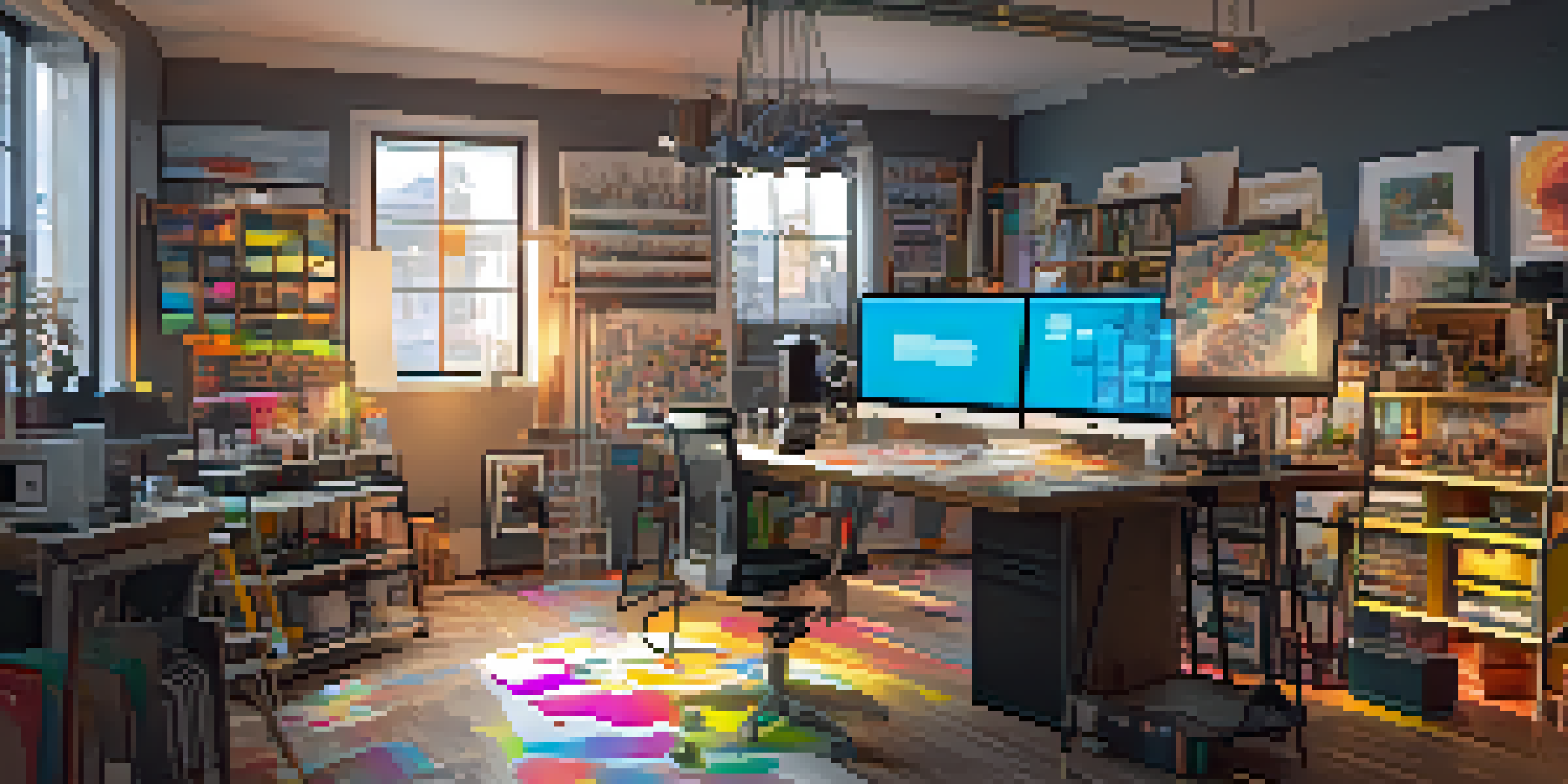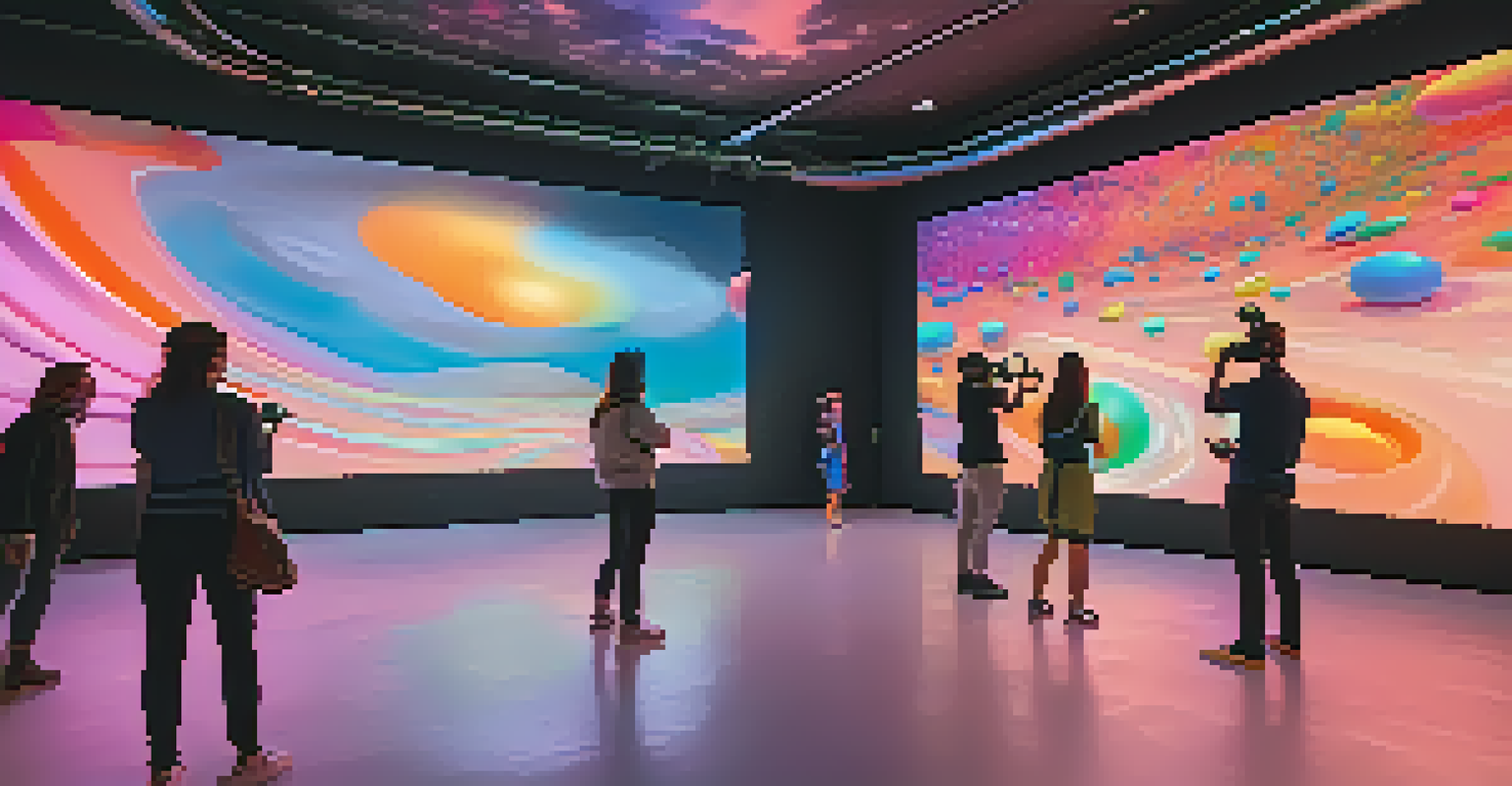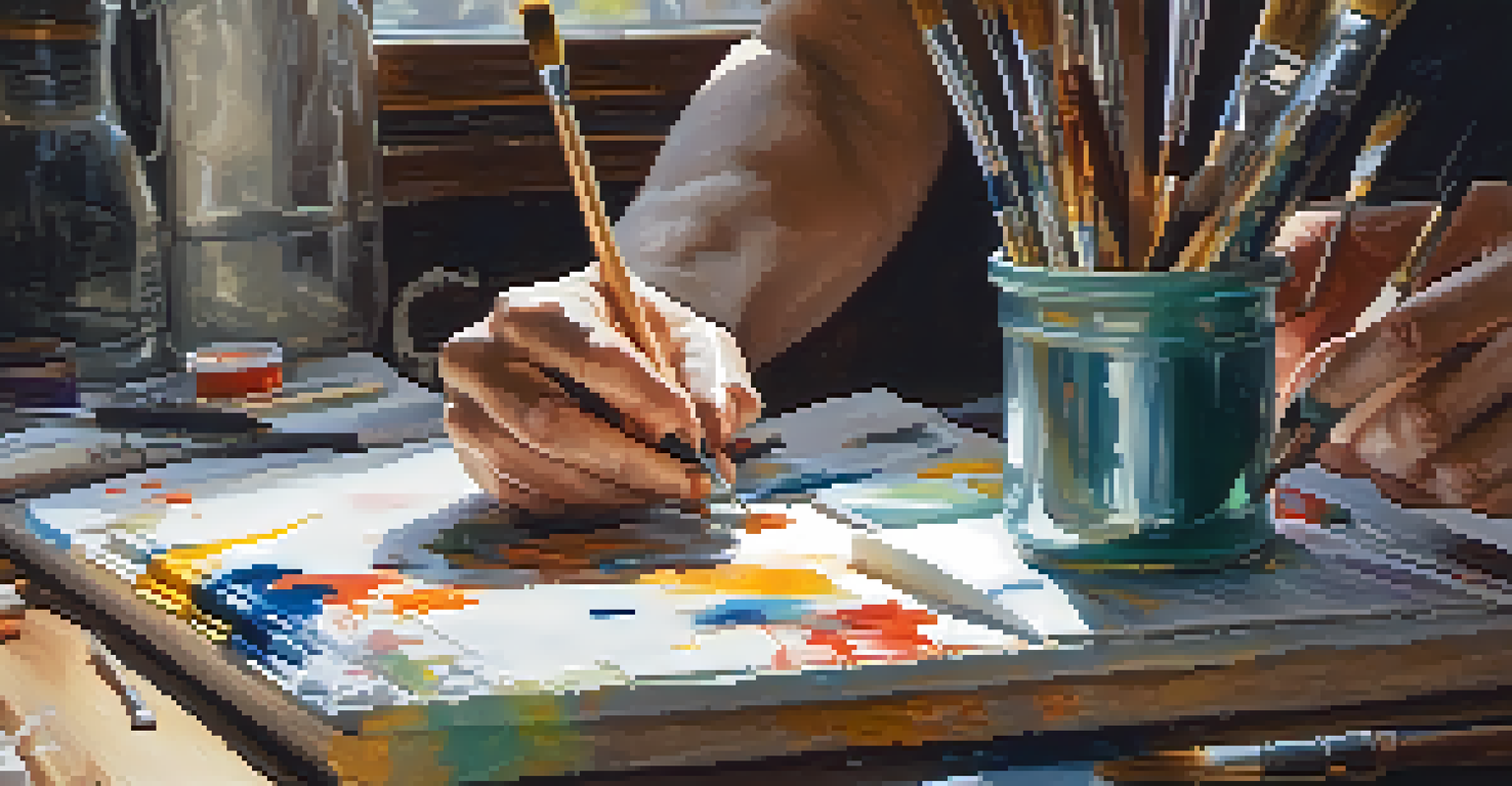The Intersection of Art, Technology, and Critical Thinking

Understanding the Role of Art in Technology
Art and technology may seem like two distinct worlds, but they are deeply intertwined. Art serves as a catalyst for innovation, inspiring technologists to think outside the box. For example, video game design often incorporates artistic elements that enhance user experience and engagement.
Art is the most beautiful of all lies; it is a lie that reveals the truth.
When artists collaborate with engineers, they create products that are not only functional but also visually appealing. This fusion can lead to groundbreaking advancements in fields like virtual reality, where immersive art experiences engage users in profound ways. Such collaborations highlight the importance of creativity in technological development.
Moreover, the aesthetic appeal of technology can influence how users interact with it. Devices that are designed with an artistic touch tend to attract more users and foster a positive emotional connection. This connection emphasizes the necessity of art in shaping the future of technology.
How Technology Enhances Artistic Expression
Technology has transformed how artists create and share their work. Digital tools, such as graphic design software and 3D printing, empower artists to explore new dimensions and techniques. For instance, artists can now create intricate sculptures that would be nearly impossible to make by hand.

Social media platforms have also revolutionized how art is consumed and distributed. Artists can share their creations with a global audience, gaining immediate feedback and support. This real-time interaction fosters community and encourages collaboration among artists across different regions.
Art Fuels Technological Innovation
The collaboration between artists and technologists inspires creative solutions and enhances user experiences in technology.
Additionally, advancements in artificial intelligence are opening new avenues for artistic exploration. AI can generate music, visual art, and even poetry, prompting discussions about authorship and creativity. As technology continues to evolve, so too does the definition of what constitutes art.
The Importance of Critical Thinking in Art and Tech
Critical thinking is essential in both art and technology, as it encourages deeper understanding and analysis. In art, critical thinking allows viewers to interpret and appreciate the nuances of a piece. For example, analyzing a painting's color palette can reveal the artist's emotional intent, enriching the viewer's experience.
The greatest innovations are those that integrate art and technology seamlessly.
In technology, critical thinking is vital for problem-solving and innovation. Developers must assess user needs, analyze data, and make informed decisions to create effective solutions. This analytical approach not only enhances the quality of technology but also fosters creativity in the process.
By integrating critical thinking into artistic endeavors, artists can challenge norms and provoke thought. This synthesis of analysis and creativity leads to work that resonates on multiple levels, prompting viewers to reflect and engage with the subject matter in meaningful ways.
Case Studies: Successful Art-Tech Collaborations
Several successful projects highlight the powerful synergy between art and technology. One notable example is the 'Rain Vortex' in Singapore's Jewel Changi Airport, which combines digital art with engineering to create a stunning visual display. This installation not only serves an aesthetic purpose but also enhances the travel experience.
Another example is the collaboration between artists and tech companies in the realm of augmented reality (AR). Projects like 'Magic Leap' allow users to interact with digital art in physical spaces, blurring the lines between reality and imagination. Such initiatives demonstrate the potential of technology to elevate artistic expression.
Tech Expands Artistic Opportunities
Advancements in technology provide artists with new tools and platforms, allowing for innovative forms of expression and global sharing.
These collaborations showcase how art can inspire technological innovation, while technology can provide new platforms for artistic exploration. Together, they create experiences that captivate and challenge audiences, proving that the intersection of these fields is ripe with possibilities.
Art as a Tool for Technology Critique
Art can serve as a powerful medium for critiquing technology, prompting discussions about its impact on society. Artists often use their work to comment on issues like privacy, surveillance, and the digital divide. For instance, installations that expose the invasive nature of data collection can spark important conversations.
By highlighting the ethical implications of technological advancements, artists encourage viewers to reflect on their relationship with technology. This critical lens fosters awareness and promotes dialogue about responsible tech use. It reminds us that technology should serve humanity, not the other way around.
Moreover, art can inspire action by mobilizing communities to advocate for change. Through exhibitions and performances, artists can galvanize public opinion and influence policy decisions. This role of art as a societal critique emphasizes its importance in shaping the future of technology and its ethical boundaries.
The Future: Trends at the Intersection of Art and Tech
As we look to the future, the interplay of art and technology continues to evolve. Emerging trends like virtual reality art installations and blockchain in art markets are reshaping how we create, share, and value art. These advancements challenge traditional notions of ownership and authenticity in the art world.
Furthermore, the rise of interactive art experiences, powered by technology, is redefining audience engagement. Immersive exhibits allow viewers to become part of the artwork, creating a personal connection that enhances the overall experience. This shift towards interactivity is likely to grow as technology advances.
Art Critiques Technology's Impact
Artists use their work to critically engage with societal issues related to technology, fostering dialogue about ethics and responsibility.
Ultimately, the future holds exciting possibilities for the fusion of art and technology. By embracing innovation and critical thinking, we can unlock new creative potentials and redefine the boundaries of both fields. The ongoing dialogue between artists and technologists will shape our cultural landscape for years to come.
Cultivating Critical Thinking Through Artistic Practices
Engaging with art can significantly enhance critical thinking skills. Analyzing various artistic styles and techniques encourages individuals to question assumptions and explore multiple perspectives. This practice fosters an open-minded approach that is beneficial in all areas of life, including technology.
Participating in creative activities, such as painting or writing, also helps develop problem-solving skills. Artists often face challenges during the creative process, requiring them to think critically and adapt their approaches. This resilience is a valuable trait that translates well into technological fields.

Moreover, art education programs that emphasize critical thinking can prepare students for future careers in both art and technology. By nurturing creativity alongside analytical skills, we can cultivate a generation of innovators who are equipped to tackle complex challenges in an increasingly interconnected world.